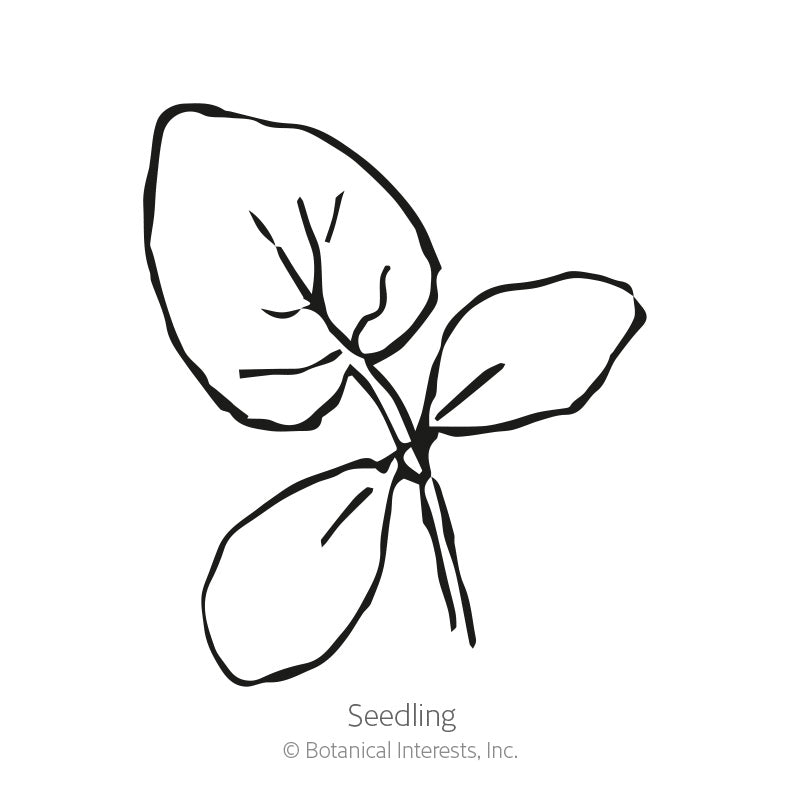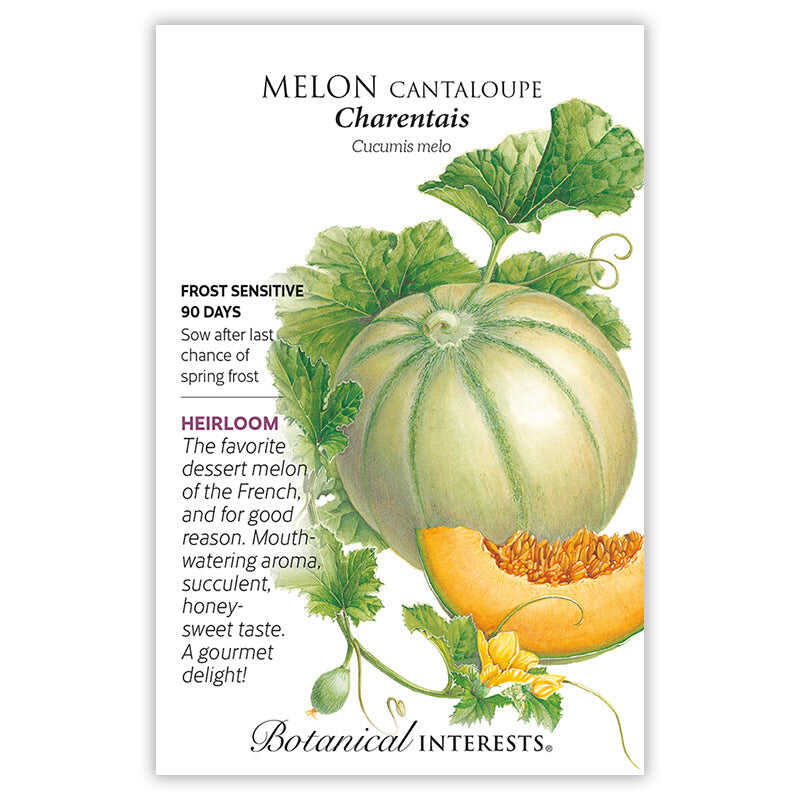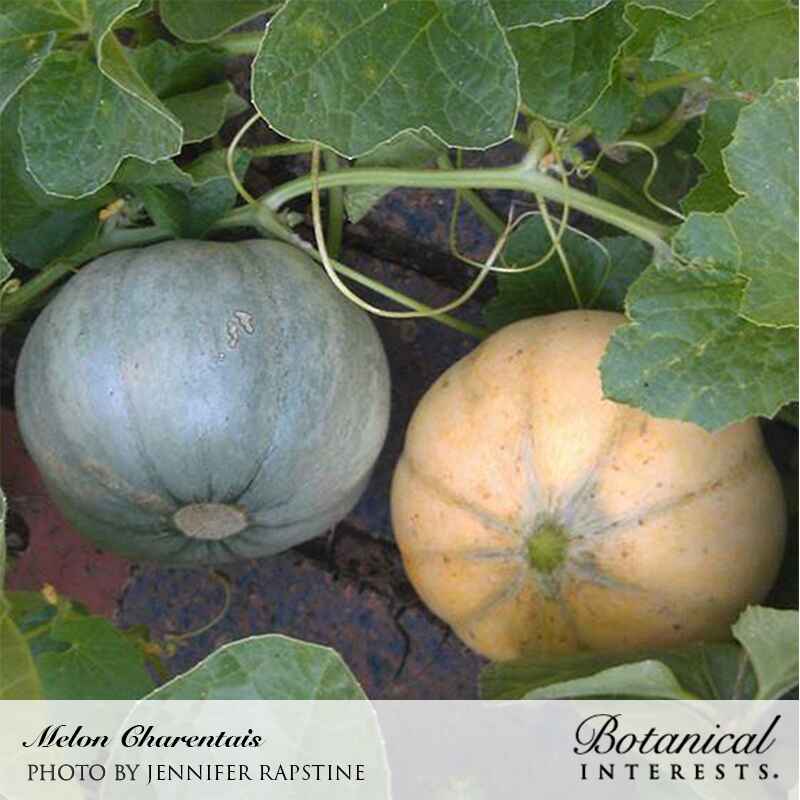



- Variety Info
- Sowing Info
- Growing Info
- Learn More
Variety Info
Days to Maturity: 90 days
Family: Cucurbitaceae
Type: Cantaloupe (Learn more)
Native: Africa, Asia, Australia, West Pacific Islands
Hardiness: Frost-sensitive annual
Exposure: Full sun
Plant Dimensions: 4'–5' sprawling vines.
Variety Info: Charentais' is about 1½ pounds, and the size of a small grapefruit. The skin is smooth and light green, with bands of darker green from the stem to the bottom. 'Charentais' is a type of true cantaloupe bred in France around 1920. It has deep orange flesh and a spicy, delicate aroma. The fruits' tender fragility makes shipping difficult; this is why we don't see them in the local grocery stores.
Attributes: Frost Sensitive

Sowing Info
When to Sow Outside: RECOMMENDED. 1 to 2 weeks after your average last frost date, and when soil temperature is 70°–90°F.
When to Start Inside: Recommended for short-season areas. 2 to 4 weeks before transplanting within 2 weeks after your average last frost date. Sow into biodegradable pots that can be directly planted in the ground; roots are sensitive to disturbance.
Days to Emerge: 5–10 days
Seed Depth: ¼"
Seed Spacing: 2–3 seeds per mound
Row Spacing: 4'–6' apart
Thinning: Thin to 1 plant per mound
Your hardiness zone is
Growing Info
Harvesting: Harvesting at the right time is very important with melons. Commercial growers harvest before melons are ripe, forcing them to ripen off the vine. But, the last few days of ripening on the vine put a lot of sugars into the melon; bottom line is that melons taste significantly better when vine ripened. How do you know when melons are ripe? Several indicators. 1) The color of 'Charentais' changes from pale green to creamy yellow. 2) The blossom end (opposite the stem) yields slightly to gentle pressure. 3) Unlike muskmelons, 'Charentais' and other cantaloupes do not abscise, or slip from the vine when ripe; cut from vine, rather than pulling or twisting, to avoid damaging plant and fruit.





